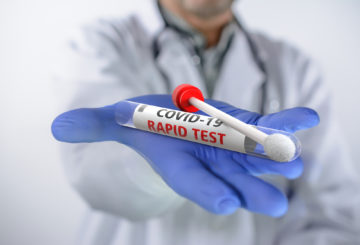Garden Weeds Series by Carol Sitarski, Master gardener volunteer Allegany County
As many gardens have, we at some time or another encountered this rough weed called “Quackgrass” also known as couch grass, twitch, quick grass, dog grass or witchgrass. Its scientific name is Elymus repens, It has a creeping habit, can reach three feet tall, blue/greenish color with a rough texture and a clasping auricle where the base of the leaf meets stem.
Quack grass is a cool season grass so therefore, the growth is faster in cool weather and slows during the summer heat. Seedheads form in summer, resembling wheat, and can remain viable up to four years in the soil. Quack grass is not picky about soil types and will grow in clay, loam, high or low pH, or sandy soil. It spreads by rhizomes, which are underground roots.
Another point about this grass is that it is allelopathic. It contains chemical compounds that are harmful to other plants growing near it, and therefore prevents plants from living near it, acting like “natural herbicide” for other plants, this is a natural way to compete for space and nutrients.
So how to control this weed? It can be eradicated with some work and diligence on your part. First, be aware that this weed is not so easy to control, even with chemical herbicides, and the chemicals that work for it can be expensive and toxic for you, too. There are a few methods to remove them, such as:
- DIGGING: Best done when soil is damp, using a digging fork or garden knife to get below the plant area removing the soil around it. Lift the plant and rhizomes up slowly pulling from soil, trying to get as many as possible without breaking them. Even tiny pieces left behind can start another plant. Next, go over the area again trying to dig at least 8-10 inches more to remove any missed rhizomes. Bag the rhizomes and put them in the trash, burn them or take them far from your garden. Don’t put it in the compost pile, they can regenerate there. Check the area in several weeks and Spring to pull any new plants emerging.
This may sound tedious but it can actually be fun. I play a game with my helper to see who pulls the longest rhizomes. Loser makes dinner.
- SOLARIZATION: This is an excellent idea if you have a larger area to clear as quackgrass doesn’t like extreme heat. Cover the area with a sheet of transparent plastic for six weeks or more during hot summer heat, make sure to seal edges to keep in the heat. After removing the cover, immediately pull any remaining weeds, lightly rake the area and plant grass or prepare for the garden.
- MULCHING: Using organic material such as straw, wood chips, etc., cover the area at least three inches deep and leave for several seasons (2 or more). Not a reliable method as grass will grow through it once the pile settles.
But not everything is bad about this weed, so, what is the positive thing about this weed? It makes a good erosion control, good forage and has been used in natural medicines. Animals will eat leaves when feeling ill to facilitate vomiting. One interesting fact I found is that during World War I settlers living in Southern Germany made a nutritious and tasty bread from the seeds and rhizomes of quackgrass due to food shortages from the war.
Quackgrass is a fascinating weed that can be positive or negative depending on the use we want to give it in our gardens. What is the effect of this weed in your garden?
References:
University of Maryland Extension. (2022). Quackgrass. Online resource. [link] https://extension.umd.edu/resource/quackgrass






